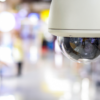Patient wandering systems help protect patients and residents who are at risk of wandering and unknowingly leaving the facility. These systems protect patients from putting themselves and potentially others in danger. They provide a superior quality of life for residents by affording them the freedom they readily desire while also providing safety and protection that family members and caregivers expect.
Why Residents Wander
Those who suffer from dementia or Alzheimer’s disease may experience severe anxiety, which is associated with not knowing where they are, what they are supposed to be doing, who everyone around them is, or even their own name. These patients wander for a variety of different reasons.
Some reasons to why residents with Alzheimer’s disease or dementia wander include:
- Agitation – this can worsen from medications which results in anxiety, nervousness, and restlessness
- Stress or fear – they may become stressed or scared because they may be unfamiliar with the situation or environment
- Searching – they begin looking for someone or something because they are in an environment frame of mind
- Basic Needs – they may be looking to use the washroom, for food or water, or wanting to get some fresh air
- Previous Events – They may be trying to follow their previous routines like going to work or buying groceries
Changes in the visual cortex, which affects one-third to one-half of people with Alzheimer’s disease can contribute to the risk of becoming lost.
Wandering is very common in residents or patients who suffer from dementia or Alzheimer’s. According to the Alzheimer’s Association, 60% of residents with these illnesses will wander.
How to Prevent Resident Wandering
To help prevent wandering, facilities can use tracking devices such a RTLS (Real-time location systems), alarm systems and more. By placing wandering bracelets on patients with Alzheimer’s disease or dementia, facilities can minimize the possibilities of losing patients. These devices do not eliminate wandering but, provide family members and staff with a peace of mind knowing these patients can enjoy a level of independence within the facility while staying safe. The systems are customizable and can give some patients more access to different areas such as common areas, while others are restricted to one main area that is protected with automated locking doors. This provides those patients with a sense of freedom and the ability to use the amenities within the facility and provides the security of keeping residents out of dangerous areas.
CenTrak offers an advanced Real-time Location System, powered by active-RFID technology. By using this technology, you can capture the exact location of residents and assets. When a patient goes astray, healthcare providers will receive an alert and have the ability to respond quickly.
Conclusion
At Aatel Communications, our objective is to implement proven solutions that will ultimately protect patients prone to wandering. We focus on offering patient wandering systems that have multiple installation options, scalability, and modular design. This advanced technology can be designed to fit virtually any facility, regardless of its size and structure, including:
- Long-term care
- Retirement homes
- Dementia care
- Mental health
- Acute care
It can also be integrated with a variety of systems and devices.
Discover the many benefits of partnering with Aatel to design a patient wandering system that will lessen the burden on your caregivers while offering your patients and residents a more comfortable and appealing living environment – and one that still emphasizes their safety and security. Contact us today to learn more.






